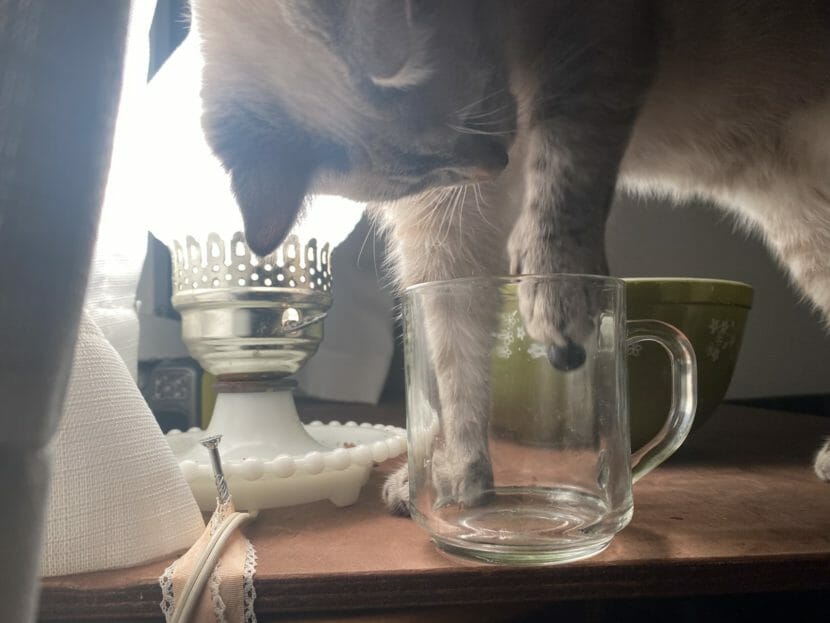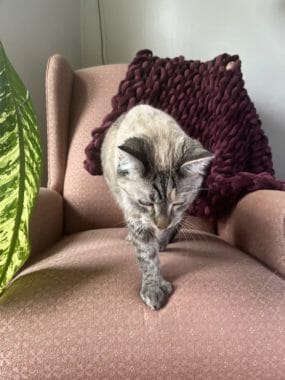
Like many rural communities, Sitka struggles to keep up with its feral cat population. But because of the island’s limited genetic diversity, an interesting genetic mutation has made its way into the feline gene pool.
Two years ago, Anna Laffrey was out for a walk on the Sitka Cross Trail when she stumbled on something unexpected.
“I literally thought that I saw a three-headed cat,” Laffrey said. “And I stopped on the sidewalk, and then took a step closer into the brush, and they scattered.”
It was a litter of kittens. She knew she’d have to act quickly. It was winter in Sitka, and she thought they wouldn’t last long in the elements. Eventually, with the help of some friends, she was able to capture one of them.
“We used a butterfly net and a pot. Yeah, we picked her up with a jacket and we had a big stock pot and we kind of dropped her in the pot with blankets and took her home,” she said.
What she didn’t know when she brought home that tiny, terrified kitten is that she was a carrier of an unusual mutation.

“She’s polydactyl,” Laffrey says. “It looks like she has thumbs. She has huge paws. She can pick up a blueberry with her hand!”
Cats with polydactylism are born with extra digits. In Alice’s case, that means six toes on each front paw, for a total of 20 toes. Most cats have 18.
But while Alice’s mega-mitts may seem like a one-in-a-million, the mutation is common in Sitka. According to visiting veterinarian Nicole Caraway, Sitka’s lack of genetic diversity makes it a perfect breeding ground for the dominant trait.
“If one parent has it, and the other parent doesn’t, then there’s a 50% chance that all the kittens that are born will have polydactyl or extra toes,” Caraway explained. “The population genetically here is smaller, so you’re going to see more of that mutation.”
But Caraway says the gene can and does occur in all feline populations.
“I normally work at a very busy practice in Northern California, where animals are obviously less likely to be inbred, and I still see a great deal of it,” Caraway said.
No one really knows how prevalent polydactylism is on Baranof Island. There’s never been a study, but guesses range from 5% to one-third of the population.
According to Animal Control Officer, Jim Rodgers, there never seems to be a shortage of them at the local shelter. On a whiteboard, he pointed out the names of the kittens who’d recently been rescued, all of which were polydactyl.
While these unique felines are slinking around at a high rate in Sitka, vet Nicole Caraway says the condition seems most common on the Eastern seaboard, where they were historically kept as ship cats. It’s said that sailors once believed they brought luck, and that their extra claws made them expert mousers.
It’s impossible to know when the first polydactyl cat made it to the shores of Sitka. But as a town full of fisherman, it only seems right that these funky-footed cats should call this place home.
